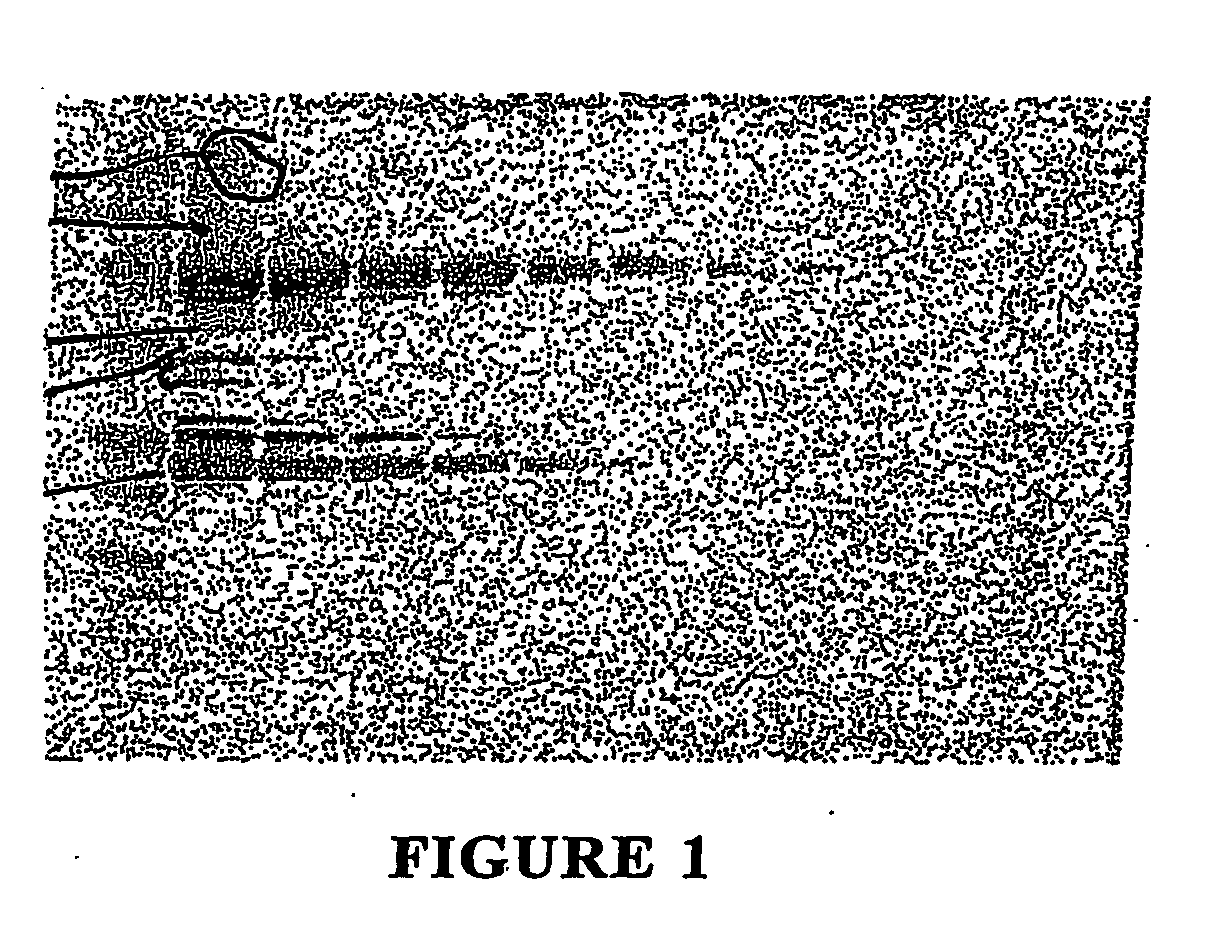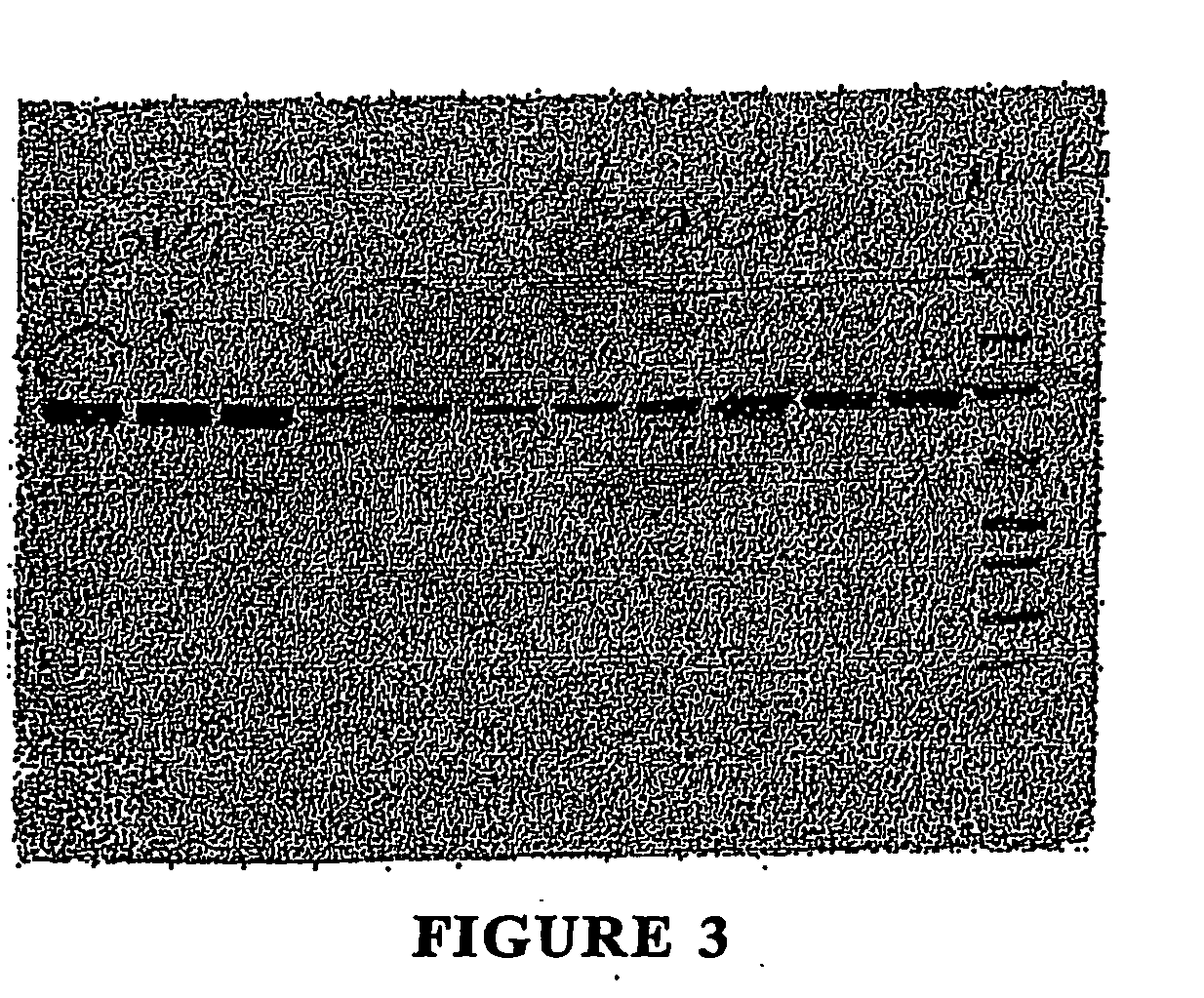Method of producing and using heat shock proteins
- Summary
- Abstract
- Description
- Claims
- Application Information
AI Technical Summary
Benefits of technology
Problems solved by technology
Method used
Image
Examples
example 1
Method of Producing Heat Shock Protein
[0042] In one embodiment, the production of heat shock proteins was induced by initiating the coagulative necrotic changes in the tissue by subjecting it to extreme heat, cooling the tissue to room temperature, and then incubating the tissue in a growth medium for a specific period of time. In a particularly preferred embodiment, neonatal foreskin is heated to 80° C. for 10 seconds and the incubated for 48 hours at 37° C. in KGM2. Under these conditions, the neonatal foreskin induces the production of an unprecedented amount of heat shock proteins.
[0043] For example, neonatal foreskin obtained from circumcision was divided into two groups: Group I was subjected to extreme heat exposure in phosphate buffered saline (PBS) at 80° C. for 10 seconds, then cooled to room temperature to create a burned group (BRN). Group II served as a non-burned / stress control. Both skin from these two groups were cut into tiny pieces approximately 1-2 mm, then incu...
example 2
Purification of Heat Shock Proteins
[0045] The various heat shock protein families may be separated and purified by using a combination of centrifugation, electrophoresis, and chromatographic methods, including but not limited to, gel filtration, ion exchange, and chromafocusing, immunoaffinity, hydrophobic interaction, reverse phase HPLC, gel electrophoresis, centrifugation, and affinity chromatographic techniques.
[0046] For example, heat shock proteins may be purified using a procedure employing DE52 ion-exchange chromatography followed by affinity chromatography on ATP-agarose. Welch W J, et al. “Rapid Purification of Mammalian 70,000-Dalton Stress Proteins: Affinity of the Proteins for Nucleotides.”Molec. and Cell Bio. 1985; 6:1229-1237.
[0047] In another example, 90, 72 and 73 kDa heat shock proteins may be purified by column chromatography, using a Whatman DEAE-cellulose column (1.5×20 cm) packed with DE52. The supernatant obtained from burned or stressed cells, as disclosed ...
example 3
Production of Heat Shock Protein-Peptide Complexes
[0054] Heat shock proteins are ubiquitous in cells, and selected heat shock proteins, such as members of the HSP90 and HSP70 families. Heat shock proteins are often associated in cells with a broad spectrum of peptides, polypeptides, denatured proteins and antigens with which they form complexes. Because such HSP-complexes may be useful in vaccines against cancers and infectious diseases, a method of purifying HSPs together with their associated peptides is also desirable.
[0055] The HSP-complexes have immunological significance as vaccines because the HSP-complexes are capable of inducing powerful antigen-specific CD8+ cellular response against the peptides in the HSP-complexes, but not against the HSP itself. Srivastava, P K. “Purification of Heat Shock Protein-Peptide Complexes for Use in Vaccination against Cancers and Intracellular Pathogens.”Methods: A Companion to Methods in Enzymology. 1997; 12:165-171. Accordingly, HSP-comp...
PUM
| Property | Measurement | Unit |
|---|---|---|
| Temperature | aaaaa | aaaaa |
| Temperature | aaaaa | aaaaa |
| Time | aaaaa | aaaaa |
Abstract
Description
Claims
Application Information
 Login to View More
Login to View More - R&D
- Intellectual Property
- Life Sciences
- Materials
- Tech Scout
- Unparalleled Data Quality
- Higher Quality Content
- 60% Fewer Hallucinations
Browse by: Latest US Patents, China's latest patents, Technical Efficacy Thesaurus, Application Domain, Technology Topic, Popular Technical Reports.
© 2025 PatSnap. All rights reserved.Legal|Privacy policy|Modern Slavery Act Transparency Statement|Sitemap|About US| Contact US: help@patsnap.com



